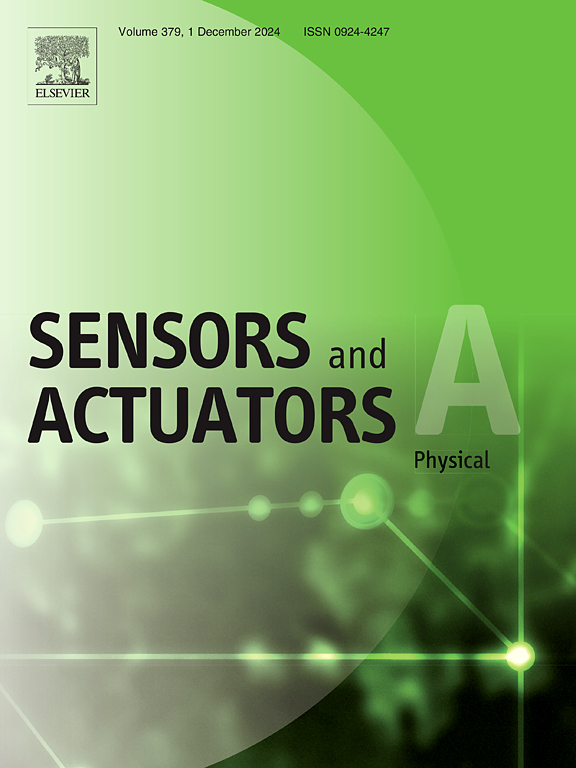从表面结构到界面工程的微纳米结构柔性传感器的仿生制造:综述
IF 4.9
3区 工程技术
Q2 ENGINEERING, ELECTRICAL & ELECTRONIC
引用次数: 0
摘要
通过探索动物和植物的仿生微纳结构,从自然中汲取灵感,为提高柔性传感器在新兴应用中的传感性能提供了有效的策略。本文综述了仿生微纳柔性传感器结构研究的最新进展,从表面结构到界面工程。首先,介绍了蜘蛛、蝎子、树蛙等动物灵感设计和捕蝇草、含羞草、新草等植物灵感设计的两个主要方向,建立了微纳结构与传感性能之间的关系。其次,综述了仿生几何在柔性压力传感器中的最新进展,如金字塔形和半球形,以增强柔性压力传感器中的力敏信号。第三,强调裂纹、褶皱、蛇形和螺旋等仿生结构的高效实现以及界面工程,重点提高实际场景中复杂变形下的传感性能。最后,讨论了仿生微纳米结构柔性传感器制造的关键挑战和未来前景,说明了该方法在健康监测和人机界面等领域的巨大潜力。本文章由计算机程序翻译,如有差异,请以英文原文为准。
Bioinspired fabrication of micro- and nanostructured flexible sensors from surface architecture to interface engineering: A review
Drawing inspiration from nature by exploring bionic micro-nano structures found in animals and plants offers an effective strategy for enhancing the sensing performance of flexible sensors in emerging applications. This paper reviews recent advances in bio-inspired micro-nano structures of flexible sensors, spanning surface architecture to interface engineering. Firstly, two primary directions of animal-inspired designs, including spiders, scorpions, and tree frogs, and plant-inspired designs, including flytraps, mimosas, and nepenthes, are introduced to establish the relationship between micro-nano structures and sensing properties. Secondly, the cutting-edge progress of bio-inspired geometries in flexible pressure sensors, such as pyramids and hemispheres, are reviewed to enhance the force-sensitive signals in flexible sensor. Thirdly, the efficient implement of bionic structures including cracks, wrinkles, serpentines and helices, as well as interface engineering is then emphasized, with a focus on improving sensing performance under complex deformations in practical scenarios. Finally, the key challenges and future prospects in the manufacturing of bio-inspired micro- and nanostructured flexible sensors are discussed, illustrating the great potential of this method in fields such as health monitoring and human-machine interfaces.
求助全文
通过发布文献求助,成功后即可免费获取论文全文。
去求助
来源期刊

Sensors and Actuators A-physical
工程技术-工程:电子与电气
CiteScore
8.10
自引率
6.50%
发文量
630
审稿时长
49 days
期刊介绍:
Sensors and Actuators A: Physical brings together multidisciplinary interests in one journal entirely devoted to disseminating information on all aspects of research and development of solid-state devices for transducing physical signals. Sensors and Actuators A: Physical regularly publishes original papers, letters to the Editors and from time to time invited review articles within the following device areas:
• Fundamentals and Physics, such as: classification of effects, physical effects, measurement theory, modelling of sensors, measurement standards, measurement errors, units and constants, time and frequency measurement. Modeling papers should bring new modeling techniques to the field and be supported by experimental results.
• Materials and their Processing, such as: piezoelectric materials, polymers, metal oxides, III-V and II-VI semiconductors, thick and thin films, optical glass fibres, amorphous, polycrystalline and monocrystalline silicon.
• Optoelectronic sensors, such as: photovoltaic diodes, photoconductors, photodiodes, phototransistors, positron-sensitive photodetectors, optoisolators, photodiode arrays, charge-coupled devices, light-emitting diodes, injection lasers and liquid-crystal displays.
• Mechanical sensors, such as: metallic, thin-film and semiconductor strain gauges, diffused silicon pressure sensors, silicon accelerometers, solid-state displacement transducers, piezo junction devices, piezoelectric field-effect transducers (PiFETs), tunnel-diode strain sensors, surface acoustic wave devices, silicon micromechanical switches, solid-state flow meters and electronic flow controllers.
Etc...
 求助内容:
求助内容: 应助结果提醒方式:
应助结果提醒方式:


